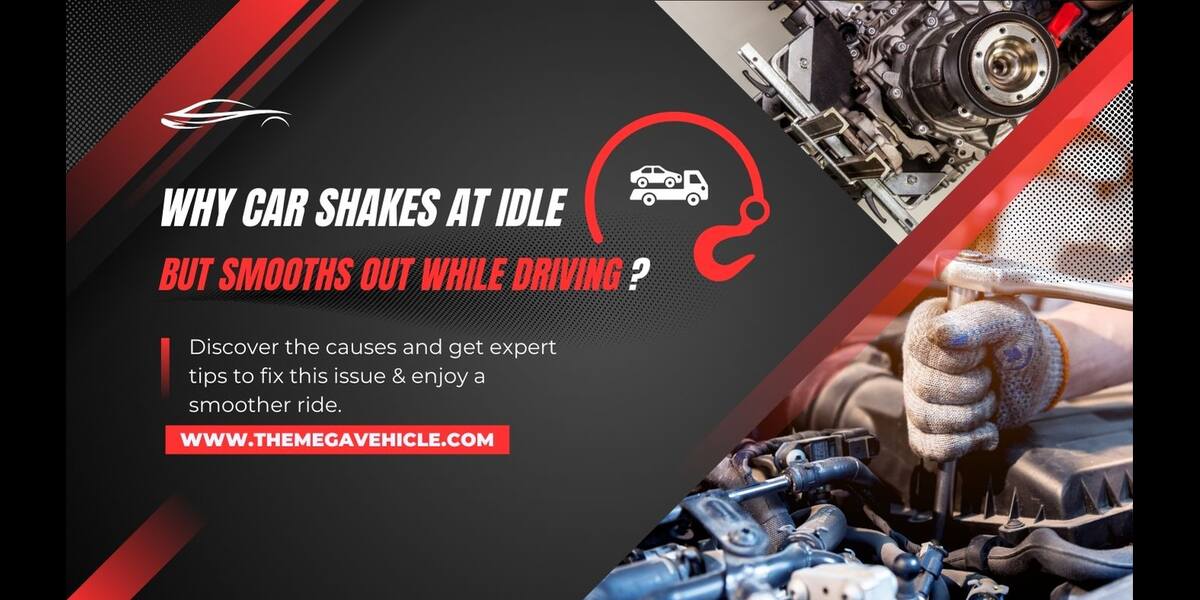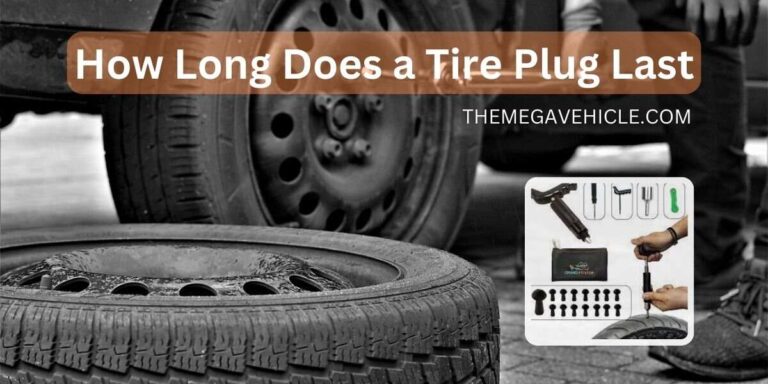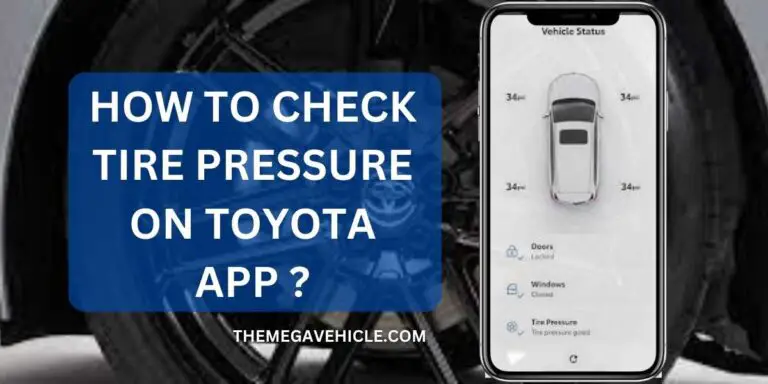Why Your Car Shakes at Idle but Smooths Out While Driving?

I. Decoding the Riddle: Your Car Shakes at Idle, but Not While Driving
Is your car playing a game of Jekyll and Hyde? Perfectly smooth on the road, but transformed into a trembling beast at every stoplight? You’re not alone. This perplexing phenomenon, known as car shakes at idle but smooths out while driving, can be frustrating and confusing. But fear not, fellow motorist, for we’re here to unravel the mystery!
1. The Tale of Two Speeds
Imagine your car as a well-oiled machine, humming along at a steady pace. This is the realm of driving smoothness, where engine components work in perfect harmony. But at a standstill, the music changes. The low RPMs of idle act like a spotlight, illuminating any underlying issues that might go unnoticed while driving. This is why your car might start to shake, shudder, or vibrate like a nervous chihuahua at a dog park.
2. From Subtle Tremors to Mighty Shakes
The severity of the shaking can vary greatly. Some cars might experience a barely noticeable vibration, while others might feel like they’re about to break into a full-fledged salsa routine. This range depends on the nature of the problem and the specific components involved. A minor issue might cause a gentle shimmy, while a more serious problem could lead to violent tremors that shake the entire car.
3. Beyond the Shakes: The Clues Don’t Stop There
While the shaking itself is a valuable clue, it’s not the only story your car is telling. Pay attention to any additional symptoms that might accompany the idle tremors. These can provide even more insight into the root cause:
- The Illuminated Oracle: Is the check engine light staring back at you with accusatory eyes? This could be a red flag indicating sensor issues, engine problems, or other potential culprits.
- The Unwelcome Symphony: Unusual engine noises like knocking, ticking, or rattling can point to specific mechanical problems like worn bearings or faulty injectors.
- The Performance Paradox: Does your car feel sluggish, struggle to accelerate, or experience reduced fuel efficiency? These additional symptoms can sometimes be linked to the same underlying issue causing the idle shaking.
By understanding the contrasting behavior at different speeds, the severity of the shaking, and the additional symptoms, you’ve taken the first step towards solving the mystery of your car’s tremors. In the next section, we’ll delve deeper into the engine itself, exploring the prime suspects behind this puzzling phenomenon. Remember, ignoring a car that shakes at idle can lead to further damage and costly repairs. Early diagnosis and intervention are key to getting your car back on track and enjoying smooth rides once again!
II. Engine Issues – The Prime Suspects: When Your Inner Combustion Gets Uncoordinated
The rhythmic hum of your engine idling smoothly should be a symphony of controlled explosions. But when that rhythm turns into a chaotic stutter, engine issues are often the culprit. Let’s meet the four main suspects behind idle shaking caused by internal combustion gone awry:
1. Misfiring Mayhem
Imagine this – one of your engine’s cylinders throws a tantrum and refuses to ignite its fuel-air mixture properly. This is called a misfire, and it creates an uneven combustion cycle, sending tremors through your car like a disgruntled drum solo. The usual suspects behind misfires are:
- Faulty spark plugs: Worn-out or fouled spark plugs can’t deliver the necessary spark to ignite the fuel, leading to misfires. Check for cracked porcelain, worn electrodes, or carbon buildup.
- Ignition coil woes: These coils provide the high voltage needed for spark plugs. A faulty coil can send weak or erratic spark, causing misfires in specific cylinders.
- Fuel injector malfunction: Clogged or dirty injectors can deliver an inconsistent amount of fuel, again disrupting the delicate balance of the combustion process.
Solutions: Replacing problematic spark plugs, ignition coils, or cleaning fuel injectors can often restore harmonious combustion and eliminate idle shaking. In severe cases, more extensive repairs or replacements might be necessary.
2. Engine Mounts on the Loose
Picture your engine as a wild stallion. Engine mounts are the sturdy ropes that keep it tethered to your car’s frame. When these mounts wear out or crack, the engine starts to buck and jiggle, sending vibrations throughout the car, especially noticeable at idle when the engine’s not under load.
Solutions: Worn or damaged engine mounts need immediate replacement. Delaying these repairs can lead to further damage to both the mounts and the engine itself. A qualified mechanic can diagnose the condition and perform the necessary replacements.
3. Vacuum Leaks: Sucking In Trouble
Your engine thrives on a precise balance of air and fuel. However, if air leaks into the intake system through cracked hoses, loose fittings, or damaged gaskets, this balance is thrown off. The engine struggles to maintain proper combustion, resulting in rough idling and shaking.
Solutions: Identifying and fixing vacuum leaks can be tricky, but with a keen eye and some specialized tools, a mechanic can track down the culprit and seal the leaks, restoring smooth engine operation.
4. Clogged Airway Blues
Just like you wouldn’t expect smooth singing from a stuffy nose, a clogged air intake or throttle body hinders the smooth flow of air into your engine. This restriction disrupts combustion, leading to idle shaking and potentially affecting performance at higher speeds too.
Solutions: Cleaning the air intake and throttle body with specialized cleaners can often remove the built-up grime and restore proper airflow. In severe cases, replacing the air filter or even the throttle body might be necessary.
By understanding these engine issues and the solutions available, you can tackle the root cause of your car’s idle shaking and get back to enjoying smooth, harmonious rides. Remember, ignoring these symptoms can lead to further damage and costly repairs down the line. So, listen to your car’s tremors, identify the suspects, and take action to restore its inner combustion symphony!
III. Beyond the Engine – When the Tremors Travel Through the Chassis
While the engine often takes center stage in the drama of idle shaking, the plot thickens when vibrations extend beyond the engine bay. In these cases, the culprits lurk elsewhere in the drivetrain and suspension, causing tremors that travel through the chassis and steering wheel, even when the engine seems to be running smoothly. Let’s explore these alternative suspects:
1. Drivetrain Dissonance
Imagine your car’s drive shafts as musical conductors, gracefully orchestrating the transfer of power from the engine to the wheels. But when these conductors become faulty, the music turns into a discordant rumble. Here are some common drivetrain culprits:
- Faulty drive shafts: Worn-out universal joints (U-joints) or imbalanced drive shafts can cause vibrations that increase with speed, often starting subtly at idle and becoming more pronounced as you accelerate.
- Transmission troubles: Internal issues like worn clutches, faulty torque converters, or malfunctioning synchronizers can also manifest as shuddering or shaking, especially during gear changes or under load.
Solutions: Diagnosing drivetrain problems can be complex, often requiring specialized tools and expertise. A qualified mechanic can test components for wear and tear, identify the specific issue, and recommend repairs or replacements. Depending on the severity, solutions might range from replacing U-joints and balancing driveshafts to overhauling the transmission.
2. Wheels Out of Whack
Sometimes, the culprits behind idle shaking don’t even touch the engine. Your car’s wheels and tires play a crucial role in smooth operation, and any imbalances or imperfections can send tremors through the entire vehicle. Here are some potential suspects:
- Imbalanced wheels: Uneven weight distribution within a wheel can cause vibrations that increase with speed, often starting mildly at idle and becoming more pronounced as you reach higher speeds.
- Misaligned wheels: When your wheels aren’t aligned properly, they create a tug-of-war against the road, resulting in vibrations that can be felt throughout the steering wheel and the car body.
- Uneven tire wear: Worn-out or cupped tires, often caused by misalignment or improper inflation, can also generate annoying vibrations, especially at idle when the tire is spinning but not under the load of driving.
- Damaged suspension components: Worn-out shock absorbers, struts, or control arms can compromise the smooth absorption of road bumps and irregularities, leading to vibrations that are felt throughout the car.
Solutions: Addressing wheel and tire issues often involves a trip to a tire shop or alignment specialist. Balancing and aligning your wheels, replacing worn-out tires, and checking for damaged suspension components can restore smooth operation and eliminate unwanted vibrations.
Remember, ignoring these tremors can lead to uneven tire wear, accelerated component degradation, and potentially even accidents. By promptly addressing these issues, you can ensure a smooth and safe driving experience while extending the life of your car’s vital components.
So, the next time your car shakes at idle, don’t just blame the engine. Look beyond the obvious, take a holistic approach, and consider the drivetrain and wheels as potential suspects. By identifying the true culprits and implementing the appropriate solutions, you can keep your car purring smoothly and your rides harmonious.
Also Read: How to Resolve Squeaking Noise While Driving But Not Brakes Applied
IV. Taking Action Yourself – Becoming Your Car’s First Responder
Before diving headfirst into repairs, it’s often empowering (and potentially wallet-friendly) to try some detective work yourself. Here are a few simple steps you can take to gather clues and narrow down the cause of your car’s idle shaking:
1. Visual Inspection – Be Your Car’s Sherlock Holmes
- Open the hood: Befriend your engine bay and take a close look for any obvious signs of trouble. Look for loose hoses, cracked belts, or leaks of fluids like oil or coolant.
- Check the undercarriage: Crawl under your car (safely, of course!) and inspect the exhaust system for leaks or damage. Pay attention to the driveshaft and U-joints for signs of wear or rust.
- Examine the wheels and tires: Look for uneven tire wear, bulges, or cracks. Check the tire pressure and ensure it’s within the recommended range.
2. Listen Like a Mechanic
- Turn off the radio and roll down the windows: Amplify your auditory senses and listen for unusual engine noises while idling. Knocking, ticking, or rattling sounds can point to specific problems like worn bearings or faulty injectors.
- Pay attention to the exhaust sound: Does the exhaust sound different than usual? A deep rumble or excessive backfiring can indicate issues with the ignition system or fuel mixture.
3. Consult the Check Engine Light
- Is the check engine light illuminated? This can be a valuable clue, indicating potential issues with various engine sensors or components. While it doesn’t automatically diagnose the problem, it’s a red flag that shouldn’t be ignored.
Remember: While these DIY checks can provide valuable information, they might not pinpoint the exact cause of the shaking. If you’re unsure, don’t hesitate to seek professional help from a qualified mechanic. They have the tools and expertise to diagnose the issue accurately and recommend the most effective repairs.
Taking these initial steps can empower you as a car owner, equipping you with the knowledge and confidence to approach the problem with a proactive mindset. So, channel your inner detective, listen closely to your car’s whispers, and be the first responder to its tremors!
V. When DIY Fails – Seeking Professional Help: Handing the Baton to the Automotive Experts
Sometimes, even the most diligent DIY detective needs backup. When your car’s idle shaking remains a mystery after your initial investigation, it’s time to call in the professionals. A qualified mechanic brings their specialized tools and expertise to the table, transforming the diagnostic process from a guessing game to a precise science.
1. The Mechanic’s Toolbox
- Diagnostic equipment: Scanners, oscilloscopes, and other tools can pinpoint trouble codes, analyze sensor readings, and identify even the most elusive gremlins within your engine and drivetrain.
- Mechanical know-how: Mechanics possess a deep understanding of automotive systems and the intricate relationships between components. This knowledge allows them to interpret the data and diagnose the exact cause of the shaking, whether it’s a faulty sensor, a worn-out part, or a complex interplay of factors.
2. The Art of Repair
Once the culprit is identified, the mechanic can recommend the most effective course of action. This might involve:
- Replacing faulty components: Worn spark plugs, ignition coils, or a damaged engine mount might need replacing to restore smooth operation.
- Cleaning clogged parts: A clogged air intake or throttle body can be cleaned or replaced, allowing proper airflow and resolving the shaking.
- Making adjustments: Misaligned wheels, imbalanced drive shafts, or faulty suspension components might require adjustments or replacements to restore proper balance and eliminate vibrations.
3. The Benefits of Professional Intervention
Seeking professional help offers several advantages:
- Accurate diagnosis: Skilled mechanics can quickly and accurately pinpoint the root cause of the shaking, saving you time and frustration.
- Proper repairs: Using the right tools and techniques, mechanics can ensure repairs are done correctly, preventing further damage and costly repeat fixes.
- Peace of mind: Knowing your car is in the hands of a qualified professional can provide peace of mind and confidence on the road.
Remember, ignoring a car that shakes at idle can lead to further problems and expensive repairs down the line. By seeking professional help promptly, you can diagnose the issue accurately, address it effectively, and get back to enjoying smooth and safe rides.
So, when your DIY efforts reach a dead end, don’t hesitate to hand the baton to the automotive experts. Their knowledge, tools, and expertise are invaluable assets in keeping your car running smoothly and safely.
Also Read: How To Get $500 Cash For Junk Cars Without Title?
VI. Preventative Measures for Smoother Rides – Keeping Your Engine Humming, Not Shaking
Just like brushing your teeth keeps your smile sparkling, proactive car care keeps your engine purring and prevents those unwanted idle shakes from rattling your world. By embracing these preventative measures, you can build a shield against automotive jitters and ensure smooth, enjoyable rides for miles to come:
1. Regular Maintenance – The Tune-Up Tonic
- Tune-ups: Scheduled tune-ups ensure your engine operates at peak efficiency. Technicians replace worn-out spark plugs, clean fuel injectors, and check air filters, minimizing the risk of combustion issues that can lead to idle shaking.
- Oil changes: Fresh oil lubricates your engine’s moving parts, preventing friction and wear. This keeps your engine running smoothly and reduces the likelihood of internal malfunctions that might manifest as tremors.
- Air filter replacements: A clean air filter allows for optimal airflow into the engine, ensuring proper combustion and preventing rough idling caused by restricted air intake.
2. Nip Problems in the Bud – Don’t Let Small Issues Blossom into Big Shakes
- Don’t ignore warning lights: A lit-up check engine light isn’t simply a dashboard decoration. It’s your car’s way of saying, “Hey, something’s not quite right!” Addressing potential issues early on, before they snowball into major problems, can save you time, money, and future tremors.
- Listen to your car’s whispers: Just like an attentive parent, pay attention to any changes in your car’s behavior. Unusual noises, decreased performance, or changes in fuel efficiency can be subtle indicators of underlying issues that can escalate to idle shaking if left unchecked.
- Address minor annoyances: That persistent squeak from the suspension or the slight wobble in the steering wheel might seem insignificant, but ignoring them can lead to further wear and tear, eventually culminating in more noticeable vibrations and potentially costly repairs.
3. Be Your Car’s Ears and Eyes – Become a Tuning Fork for Smoothness
- Take regular test drives: Don’t just hop in and go. Pay attention to your car’s behavior during daily drives. Notice any changes in idle smoothness, unusual vibrations, or performance variations. This awareness can help you identify potential issues before they become major problems.
- Become a sound detective: Listen intently for any new or unusual noises coming from your engine, drivetrain, or suspension. A knock, a rattle, or a persistent hum can be clues to problems lurking beneath the hood.
- Trust your intuition: If something feels off about your car, don’t dismiss it as mere paranoia. It’s better to err on the side of caution and have a mechanic check it out than ignore potential issues that could lead to bigger problems down the line.
By incorporating these preventative measures into your car care routine, you can safeguard against idle shaking and keep your vehicle running smoothly and reliably for years to come. Remember, an ounce of prevention is worth a pound of tremors, and a little proactive attention can save you from a lot of future automotive headaches. So, listen to your car, address minor issues promptly, and invest in regular maintenance – your car will reward you with smooth, confident rides and a happy engine purr.
VII. Bonus Tip: Decode the Tremors with a Driving Diary
“Car shakes at idle but smooths out while driving” – that cryptic message your car sends can be frustratingly vague. But don’t underestimate the power of details! Keeping a record of these shaking episodes and the surrounding driving conditions can be a detective’s goldmine for your mechanic. Here’s how:
1. Jot it Down
- When does it shake? Note the specific times or situations when the shaking occurs. Does it happen after you start the engine cold, when stopped at traffic lights, or only on certain road surfaces?
- How does it feel? Describe the type of shaking – is it a mild vibration, a noticeable tremor, or a violent shudder?
- Driving conditions: Record any relevant details about the environment and driving circumstances. Was it uphill, downhill, or on flat terrain? Did it happen after a period of idling, after hard acceleration, or during certain speeds?
- Additional clues: Note any accompanying symptoms like unusual engine noises, warning lights, or changes in performance.
2. Why this helps
This information paints a clearer picture for the mechanic. Knowing the specific triggers and context of the shaking helps narrow down the possible culprits. Did the rough idle appear after a cold start? It could point to engine temperature sensors or fuel injector issues. Does the shaking worsen uphill? Possible drivetrain or suspension problems might be on the horizon.
3. The Power of Early Diagnosis
Ignoring a car that shakes at idle can be tempting, especially if it smooths out while driving. But remember, those tremors are a symptom, not the disease. Delaying diagnosis can lead to:
- More extensive damage: Underlying issues can worsen, causing irreparable damage to engine components or drivetrain parts.
- Costly repairs: Ignoring small problems allows them to snowball into major fixes, demanding more time and money to rectify.
- Safety hazards: Unattended trembling can indicate problems with steering, suspension, or brakes, compromising your safety and that of others on the road.
4. Take Action, Drive Smoothly
By keeping a simple driving diary, you actively participate in your car’s well-being. You equip your mechanic with valuable data and empower yourself to tackle the problem head-on. Early diagnosis and intervention are key to getting your car back on track, running smoothly, and ensuring safe and enjoyable drives for miles to come.
So, grab a notebook, listen to your car’s tremors, and start decoding the message. You might just be the key to unlocking a smooth and worry-free journey!






